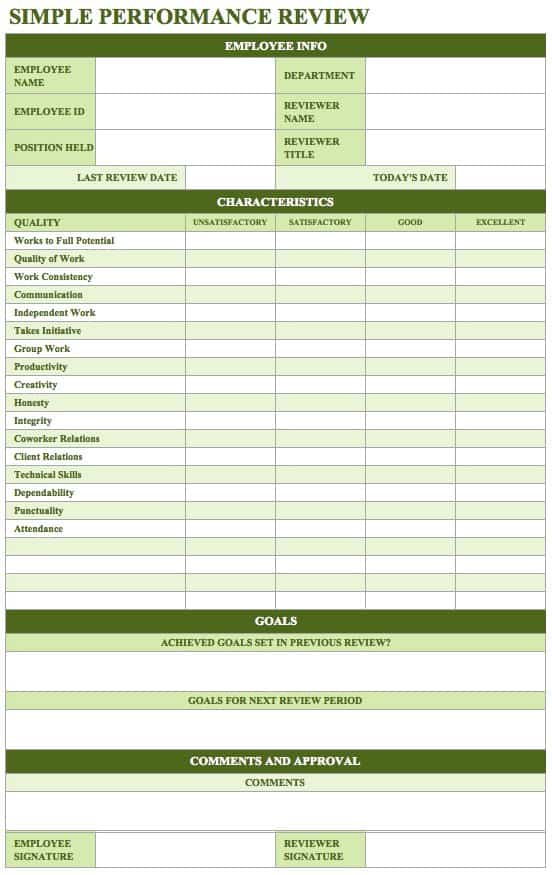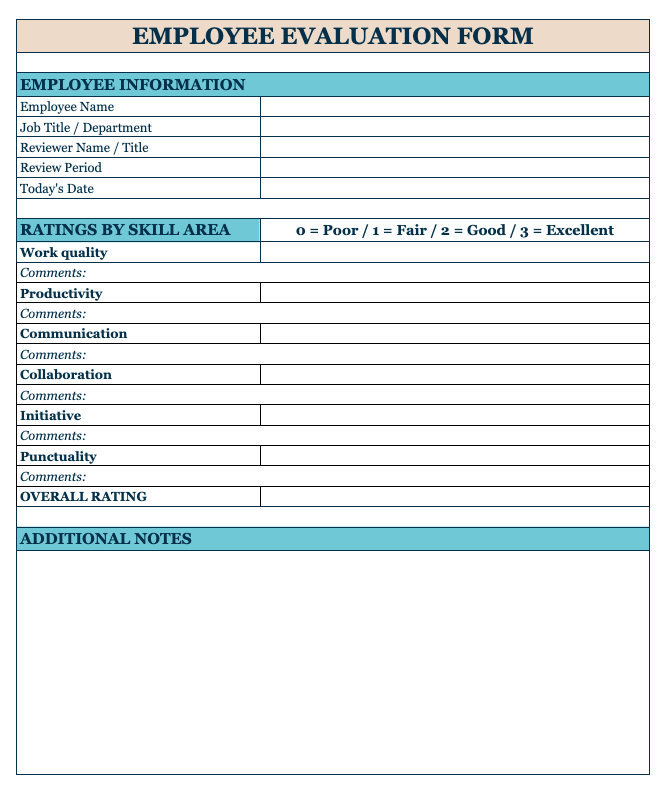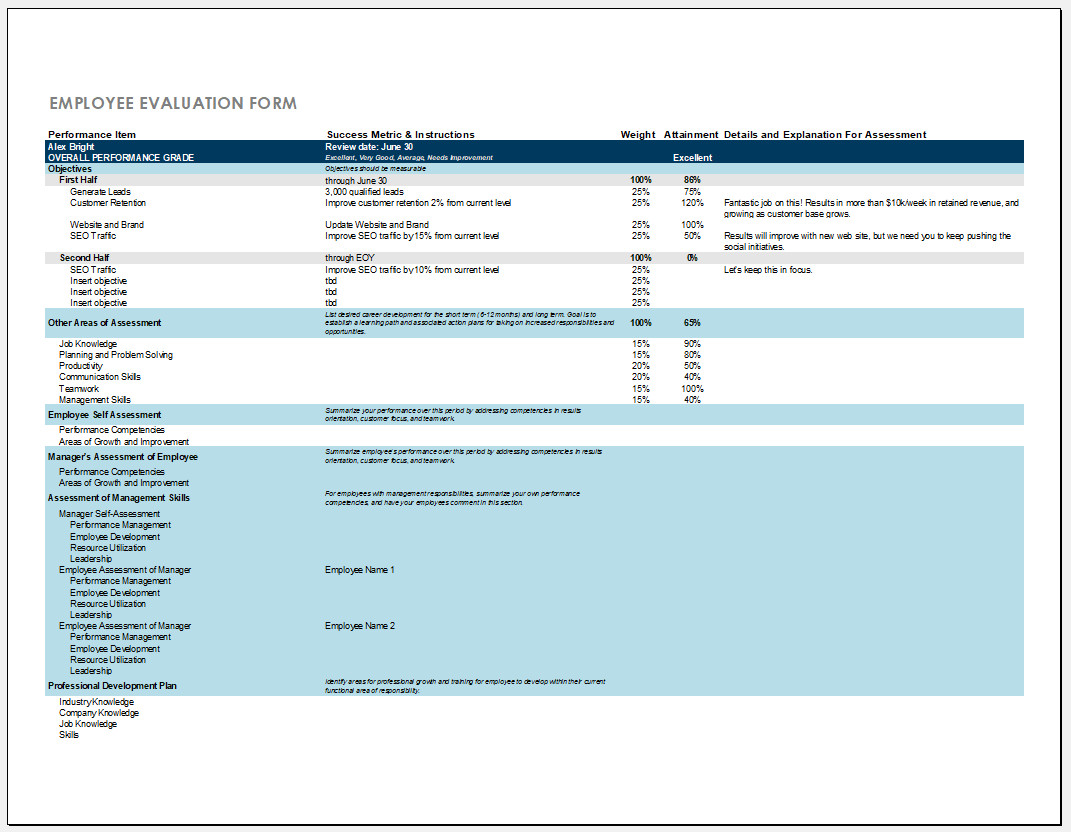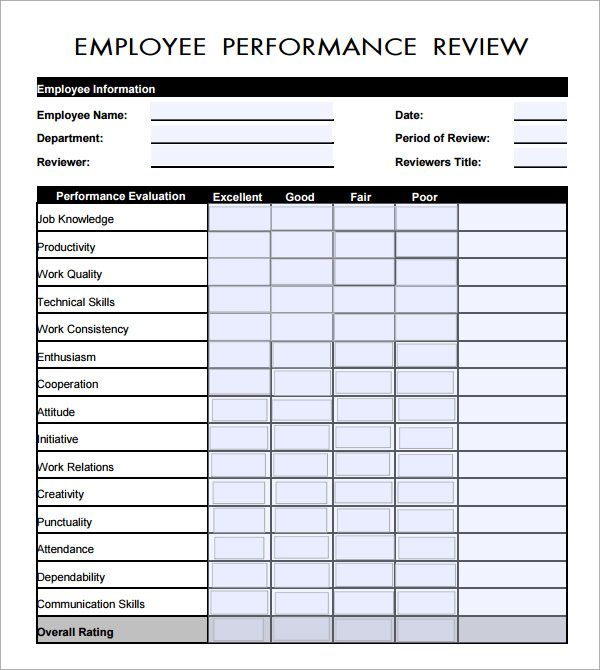Employee evaluation forms are essential tools for assessing and documenting an employee’s performance, identifying strengths and areas for improvement, and facilitating career development, performance reviews, and informed decisions regarding compensation, promotions, and training needs.
In this guide, we will explore what employee evaluation forms are, why they are important, how to use them effectively, examples of different types of evaluation forms, and tips for successful implementation.
What are Employee Evaluation Forms?
Employee evaluation forms are documents that employers use to assess and document an employee’s performance in various areas. These forms typically include a series of questions or statements that evaluate different aspects of an employee’s job performance, such as job knowledge, communication skills, teamwork, problem-solving abilities, and time management.
By using these forms, employers can gather specific and objective information about an employee’s strengths, weaknesses, and overall performance.
Why are Employee Evaluation Forms Important?
Employee evaluation forms play a crucial role in the performance management process.
Here are some key reasons why these forms are important:
- Assessing Performance: employee evaluation forms provide a structured framework for assessing an employee’s performance objectively. They help employers gather feedback from different sources, such as supervisors, peers, and subordinates, to ensure a comprehensive evaluation.
- Identifying Strengths and Areas for Improvement: These forms help identify an employee’s strengths, which can be leveraged to maximize their potential and contribute to the organization’s success. They also highlight areas for improvement, allowing employers to provide targeted training and development opportunities.
- Facilitating Career Development: employee evaluation forms provide valuable insights into an employee’s career goals, aspirations, and areas of interest. This information can be used to align employees’ career development plans with organizational goals, ensuring a mutually beneficial growth path.
- Performance Reviews: Employee evaluation forms serve as a foundation for conducting performance reviews. They provide a documented record of an employee’s performance over a specific period, making it easier to track progress, set goals, and provide constructive feedback.
- Informed Decisions regarding Compensation, Promotions, and Training Needs: By evaluating an employee’s performance using these forms, employers can make informed decisions regarding compensation adjustments, promotions, and training needs. These decisions are based on objective data rather than subjective opinions.
How to Use Employee Evaluation Forms Effectively
Using employee evaluation forms effectively requires careful planning and implementation. Here are some steps to follow:
1. Define Clear Evaluation Criteria
Before using an employee evaluation form, clearly define the evaluation criteria that align with the job role and organizational goals. The criteria should be specific, measurable, achievable, relevant, and time-bound (SMART). This ensures that evaluations are fair, consistent, and meaningful.
2. Train Evaluators
Provide training to evaluators on how to use the evaluation forms effectively. This includes understanding the criteria, providing constructive feedback, and maintaining objectivity. Training helps ensure that evaluations are unbiased and contribute to employee growth.
3. Communicate Expectations
Communicate the purpose and expectations of the evaluation process to employees. Explain how the evaluation forms will be used, who will be involved, and how the feedback will be shared. This promotes transparency and reduces anxiety among employees.
4. Provide Timely Feedback
Once evaluations are completed, provide timely feedback to employees. Schedule one-on-one meetings to discuss the evaluation results, address any concerns, and set goals for improvement. Timely feedback helps employees understand their performance and motivates them to enhance their skills.
5. Use Evaluation Results for Development
Use the evaluation results to identify training and development opportunities for employees. Create individual development plans that align with their strengths and areas for improvement. This demonstrates a commitment to employee growth and enhances job satisfaction.
Examples of Employee Evaluation Forms
There are various types of employee evaluation forms available, depending on the organization’s needs and objectives. Here are some examples:




Tips for Successful Implementation of Employee Evaluation Forms
- 1. Communicate the Purpose: Communicate the purpose, benefits, and expectations of using employee evaluation forms to all stakeholders.
- 2. Ensure Consistency: Train evaluators to apply the evaluation criteria consistently and avoid bias or favoritism.
- 3. Provide Guidance: Offer guidance to employees on how to complete the evaluation forms accurately and provide meaningful feedback.
- 4. Regularly Review and Update: Periodically review and update the evaluation forms to ensure they remain relevant and aligned with organizational goals.
- 5. Encourage Two-Way Communication: Create a culture of open communication where employees can provide feedback on the evaluation process and suggest improvements.
- 6. Recognize and Reward: Recognize and reward employees who consistently demonstrate exceptional performance and contribute to the organization’s success.
- 7. Use Evaluation Results: Use the evaluation results as a basis for making informed decisions regarding promotions, compensation adjustments, and training needs.
- 8. Continuously Support Development: Provide ongoing support and resources to help employees improve their skills and achieve their career goals.
Conclusion
Employee evaluation forms are valuable tools that enable employers to assess an employee’s performance, identify strengths and areas for improvement, facilitate career development, conduct performance reviews, and make informed decisions regarding compensation, promotions, and training needs.
By using these forms effectively and following the tips provided in this guide, organizations can create a fair, transparent, and growth-oriented evaluation process that benefits both employees and the organization as a whole.
Employee Evaluation Form – Download
